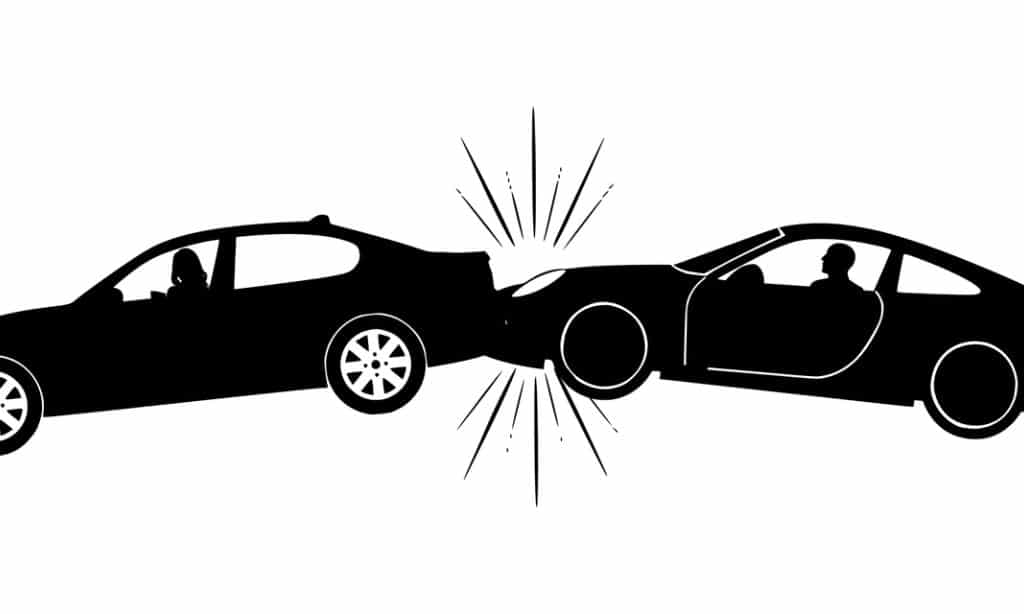Rear-end car accidents are one of the most common types of collisions on the road, and they can occur at any time, even in slow-moving traffic. These types of accidents happen when a vehicle hits the back of another vehicle, causing damage to both cars and potentially resulting in serious injuries or even death. While many may dismiss rear-end collisions as minor fender benders, they should not be taken lightly.
In this blog post, we will discuss the various causes of rear-end car accidents, the steps you can take to prevent them from happening, and what to do if you find yourself involved in one. Whether you’re a driver or a passenger, it’s essential to understand the potential dangers of rear-end collisions and the importance of taking precautionary measures. Let’s dive in.
What Causes Rear-End Car Accidents?
There are several common causes of rear-end car accidents, including distracted driving, tailgating, and sudden stops. Distracted driving is one of the leading causes, where drivers are not paying attention to the road because they are texting, eating, or engaging in any other activity that takes their focus away from driving.
Tailgating or following too closely behind another vehicle can also lead to a rear-end accident if the driver in front suddenly brakes. Additionally, sudden stops due to traffic congestion or unexpected obstacles on the road can catch drivers off guard and result in a rear-end collision.
It’s crucial to contact a legal expert, such as a car accident attorney, if you have been involved in a rear-end collision due to someone else’s negligence. For instance, a Myrtle Beach rear end car accident lawyer can help you determine if you are entitled to compensation for your injuries and damages. They will also guide you through the legal process and help you receive fair compensation for your losses.
How to Prevent Rear-End Car Accidents
While some rear-end car accidents may be unavoidable, there are steps you can take to reduce the risk of these collisions. Here are a few prevention measures:
- Keep your eyes on the road at all times and avoid any distractions while driving. This includes texting, eating, adjusting the radio or GPS, and other activities that take your focus away from driving.
- Maintain a safe distance between your vehicle and the one in front of you. The general rule is to have at least one car length for every 10 mph you are traveling.
- Be aware of your surroundings and stay alert for any potential hazards or obstacles on the road.
- Use turn signals when changing lanes or making turns to give other drivers ample time to react.
- Keep your car in good condition, including regular maintenance checks and ensuring your brakes are working correctly.
- Take precautions during inclement weather, such as heavy rain or snow. Decrease your speed and increase your following distance to allow for better reaction time in case of sudden braking.
What to Do After a Rear-End Car Accident
If you are involved in a rear-end car accident, it’s crucial to take the following steps:
- Check for injuries: First and foremost, ensure that you and everyone else involved are not seriously injured. If anyone needs medical attention, call 911 immediately.
- Move out of harm’s way: If possible, move your car to the side of the road or a safe location to avoid any further accidents.
- Exchange information: Get the contact and insurance information from all involved parties, including names, phone numbers, addresses, and insurance details.
- Document the scene: Take photos of the vehicles involved and their positions. This can serve as evidence for insurance claims or legal proceedings.
- File an accident report: Contact the police and file an accident report even if there are no serious injuries. This will help with determining fault and documenting the incident for insurance purposes.
- Seek medical attention: Even if you don’t feel injured right after the accident, it’s essential to get checked by a doctor. Some injuries, such as whiplash, may not show symptoms until days after the accident.
- Notify your insurance company: Contact your insurance provider and report the accident as soon as possible. They will guide you through the claims process.
- Consult with a car accident attorney: If you have sustained injuries or significant damages, it’s advisable to consult with a car accident attorney. They can help protect your rights and ensure you receive fair compensation for your losses.
Why Hiring a Lawyer is Necessary After a Rear-End Car Accident?
Hiring a lawyer after a rear-end car accident can be beneficial for several reasons. Firstly, an attorney can help determine who is at fault for the collision and gather evidence to support your claim. This is especially crucial if there is a dispute over liability or if the other driver’s insurance company denies your claim.
A lawyer can also calculate the full extent of your damages, including medical expenses, lost wages, and pain and suffering, to ensure you receive fair compensation. They can negotiate with insurance companies on your behalf and represent you in court if necessary.
Furthermore, hiring a lawyer allows you to focus on recovering from your injuries without the added stress of dealing with legal matters. They will handle all aspects of your case and fight for your rights, giving you peace of mind during a difficult time.
Rear-end car accidents can have severe consequences for both drivers and passengers. It’s essential to understand the common causes of these collisions and take necessary precautions to prevent them. However, if you find yourself involved in a rear-end accident, it’s crucial to follow the appropriate post-accident steps and seek legal assistance if needed. A skilled car accident attorney can help protect your rights and ensure you receive fair compensation for your losses. Remember to always prioritize safety on the road and be prepared for any unexpected situations that may arise while driving.








































